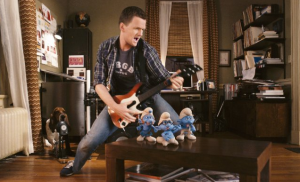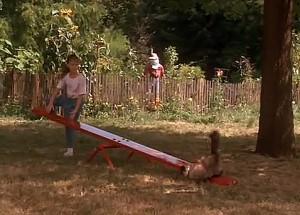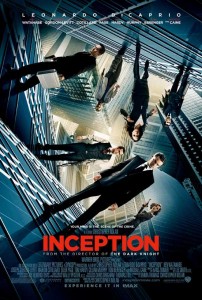Archive for category Film
Smurfs, Hollywood, and the Nature of “World-Building”
Posted by kjohnson1585 in Animation, Comics, Film, Television, Uncategorized, Video Games, Writing on March 28, 2011
Hollywood will be smurfing our theaters with the new Smurfs movie, released on August 3, 2011:
I’m no longer the type of person to decry the end of Hollywood’s creativity or bitch about the onslaught of lazy slop of reboots, remakes, sequels, prequels, “re-visionings,” and poor adaptations. I’ve heard all the complaints, whines, eye-rolling comments, and exasperations. Don’t get me wrong, I agree. But there’s no point complaining, since Hollywood and the rich executives who run them will continue to produce them. Marmaduke. Underdog. Yogi Bear. Alvin and the Chipmunks. They’re just gonna keep coming.
And why not? People go and see them. And the public isn’t exactly running to the original stuff – Inception being the exception (and even that has its problematic justifications). Besides, beyond the lame premises, people do work on these films, and arguably a few of them actually work hard on their respective roles. And, I’ll be honest: on a slow day in the future, when it’s on TNT and I’m bored and have time to kill, I may watch an hour of one of these films. Hell, I saw twenty minutes of Underdog while at the gym. Stupid, but hearing Patrick Warbuton say “Dogfish” while wearing a too-tight stocking cap was damn hilarious. (Does the context even matter?)
This write-up isn’t about the hack-work of the Hollywood system (it’s always been there, from the lesser studio system works of the 50s, to the trash-exploitation films of the 70s, to the early TV-show-turned-films of the 90s). This is actually about an interesting set of comments concerning these types of stories and attempts to wrap one’s head around the premises in question. People seem more willing to explore the fringes of a concept a lot more than usual; in other words, they seem to want more “world building”.
In effect, people wants to see characters inhabit their own existence, and the logic in which that existence came to be. Why couldn’t the Smurfs exist in their own world? Why make them interact with humans? The same could be said with Hop. Couldn’t he just be a Easter bunny in an… I don’t know, an Easter bunny world? Or, take Cars – a film which has been sarcastically befuddling people: who built these cars? Why are there sidewalks? And so on.
It’s difficult for me to acknowledge this, but these films are the now-equivalent of the 2D-live action films like Who Framed Roger Rabbit and Space Jam. Unlike today’s CGI/live action films, however, Roger Rabbit and Space Jam at least tried to contextualize their worlds. In Roger Rabbit, cartoon characters were “actors” of their own right in 1940s America; in Space Jam, the animated world, underneath our own, was about to be invaded by aliens. It doesn’t make “full” sense in closer inspection (do animators exist in Roger Rabbit? why would aliens really need to play basketball to global domination?), but there’s enough content to keep our focus and suspend our disbelief.
The problem isn’t really the writers, but the base material and the intended audience. Yogi Bear and the damn-near full gamut of Hanna-Barbara cartoons place animated characters among humans. Looney Toon shorts did too, so it isn’t Cartoon Network’s fault per se that the upcoming cartoon randomly places Bugs and Daffy among a world of humans. They ought to take lessons from Lauren Faust, whose reboot of MLP seem to establish a fully-fleshed world in which the characters can thrive, without falling into the two traps of over-explaining or under-explaining their worlds.
Over-explaining puts -too- much detail into the world, focusing on the excessive details without providing a solid story to work with. Heroes fell into this trap, Final Fantasy games and most JRPGs are notorious for this, and Sonic the Hedgehog fans seem enamored with the details of everything Mobius instead of the story of the comic run (comics, with their constant need for retconning, seems to be the biggest culprit in over-explaining). By contrast, under-explaining creates a broad world without fleshed out rules that fail to stay consistent with the various stories being told. Heroes did this (yes, somehow a show both OVER and UNDER explained its world), and recent shows like V apparently has been throwing a ton of ideas to the wall without anything in place.
Bottom-line: good world building is hard. It takes planning, a dedication to understanding the types of stories you wish to tell, and the surroundings in which you wish to tell it. The characters must be beholden to this world you create, and the audience should be drawn into it. Showcase this world, and let the characters thrive in it, and let the audience figure out where the limits of this world go. Sure, some forms of entertainment can be looser in this regard (take Spongebob, where fires burn and electricity flows freely underwater), but the basis is there (all the characters are underwater species, and mammals need aquatic suites to breath.)
So, really, it’s not a BIG surprise that films like the Smurfs, Hop, and Yogi Bear tosses its characters in the real world and let them do whatever. Why bother to put much thought into the world of such films if their mostly for kids, kids who care very little about “where the sidewalks in Cars” came from? Good world building is better for long-term venues, like television, books, and video games anyway; films, as great as they can be, are difficult to justify in several months of rules, laws, social hierarchies, status quos, and so on. Not to say they can’t exist in cinema, it’s just harder to make it work in three hours or less without over or under-explaining everything.
Towing the line between “but how?” and “who cares?” is a tricky one, especially pushing into sci-fi territory. In a certain way, not only does one have to create a certain level of plausibility in the self-created world, but – and here’s the key – work to deny further inquiry. The limits are not only what the characters can do, but what the audience is willing to believe. Yogi Bear is a good example. He’s a talking, walking bear, so why aren’t they other walking, talking animals? If there were at least 2 or 3 other talking animals, then the audience wouldn’t be so hard-pressed in wondering about Yogi. (In effect, the later Hanna-Barbara crossover films, which contained a number of the talking animal characters, was an easier pill to swallow).
Films are better served to KISS (Keep It Simple, Stupid) in their worlds unless we’re entering trilogy territory; even then, there’s shaky ground. Both the Matrix and Star Wars were straining by the third film, the former more so than the latter, and the less said about the Star Wars prequels, the better. Books, games, and TV have more time to share their environments in detail, but even they can be over and/or under achieving.
My advice in the art of world building is to let your characters and story define the world, and not the other way around. The goals should reveal the strengths and limits of the environment, no more, no less. Build your conflict, understand your tone and genre, and from there, the rules should automatically come. Don’t force your beliefs, ideologies, or philosophies into the world until and unless they are emphatic to the development of the story or character. And above all, know when to stop. Let the fans fill in the details.
I’m sure all five Smurf fans in existence have already nailed the lore down, so they should be the only ones truly angry come August first.
CHILDHOOD REVISITED – HOMEWARD BOUND: THE INCREDIBLE JOURNEY
Posted by kjohnson1585 in Childhood Revisited, Film, Uncategorized, Writing on January 19, 2011
Homeward Bound: The Incredible Journey – (1993)
Director: Duwayne Dunham
Starring: Michael J. Fox, Sally Field, Don Ameche
Screenplay by: Caroline Thompson, Linda Woolverton
I profusely apologize for the late posting of this entry. It was supposed to be uploaded a week ago, but last minute events held me up in preparing for my trip out to LA. To wit: it’s not that I didn’t want to continue this feature, it’s simply that the webtoon pitch and work has kept me overall very busy. That, and the fact that Homeward Bound is incredibly boring.
NOSTALGIC LENS: Homeward Bound is one of those “kill time in school” films – you know, the ones where the teacher shows it to you at the end of the day when classes are over and you’ve learned everything you could for the day, which manages to produce a short, safe, kids-friendly, 90-minute tale that does the bare minimum to warm the heart. (There are a few films that fit this list which I’ll be rewatching) While I remember mildly enjoying this film, I can’t say it particularly warmed my heart or left any lasting impression. I thought they fought a bear in this movie.
DOES IT HOLD UP: They don’t fight a bear. They fight a cougar. And they don’t really fight the cougar, because it’s painfully obvious that the cougar and the canines are in completely different spaces. It’s an editing trick. See, cause what you do is cut different frames of differently shot scenes, so it makes it seem like they’re in the same space. Movie magic!
Homeward Bound is a fucking slog. It’s a film that exist simply to exist. It certainly doesn’t have the heartwarming eye for detail and endearing elements like Babe, and yet, doesn’t inspire anger and hatred like the horrible Theodore Rex. It’s just a boring, run-of-the-mill glacier of a film, with predictable beats and nonsensical moments, and forced conflicts to make what should have been a 22-minute episode of a PBS show into a full-length feature.
Due to a huge and “incredible” eye-rolling predicament, the pets of the Seaver family – one Chase, Shadow, and Sassy – believe themselves to be abandoned at some farm when they’re placed there for a week for some reason or another. They manage to break out of their pen and find themselves trucking across through the wilderness to find their way home.
The only thing about the film that’s kind of interesting is the decision to make the pets unable to understand their human owners. This language barrier lays a somewhat plausible base in which all this could happen. But the “comedy of errors” set of coincidences that keep this film moving is so ridiculous that it drives you crazy. A local farmer misinterprets a note that the animals are fine. Chase goes nuts when some doctors help him, prompting an extra forty minutes of movie when they “escape” the very help they seek to find. There’s a random scene where a disheveled Sassy is nursed back to help, only to never be referenced again. And so on.
The writing’s filler. The acting is between bland and awful (I’m looking at you, kids). The cinematography of some of the outdoor scenes are nice, but hardly anything special. A competent cinematographer SHOULD be able to film visually striking outdoor shots. And, as alluded above, the editing is atrocious. Here’s every single complaint, in one deliciously full ten minute clip:
Beyond that, though, there’s nothing else about this film worth talking about. It certainly won’t wow or impress adults, and it barely passes the mark for “talking animal” films. Keith Phipps over at the AVClub wrote quite on point about how dogs make bad actors. The more you think about it, the more you realize that these trained creatures are really simply reacting to cues off-screen, and only the top notch editors, voice artists, and directors can really pull it off. Homeward Bound, by merely being adequate, ultimately fails.
IN A NUTSHELL: Yawnfest. Homeward Bound is as boring as the actors clearly are. I know teachers are killing time, but Jesus, you’re also killing excitement.
NEXT UP: Casper
Thinking vs. Entertaining: Just Kiss and Make Up
Posted by kjohnson1585 in Animation, Film, Television, Uncategorized, Video Games, Writing on October 5, 2010
I saw Inception three weekends ago and, for the most part, it rocked. In fact, I mentioned on a comment board that Inception “(intellectually) rocked.”
It got me thinking, and I’m not talking about the multiple layers of what was a dream and what was real in the movie. It got me thinking about the oft-debated role of entertainment in the world today, of the power of pop culture and the supposed responsibility it has towards the viewing public at large. Should it be a purely-entertaining spectacle, a visual and narrative means to appeal to the “lowest common denominator” (a phrase which I loathe to the core, in that it belittles the worth of the average person – to the point that they lash out into, oh, let’s say, Tea Partier-like mentalities)? Or should it be a thought-provocative, challenging piece of work that really forces its audience to ponder the world around them?
After hits like Inception and The Matrix, can it be both?
Short answer: of course not. Financially-speaking, it’s impossible. You need the best screenwriters, the best directors, the best action-choreographers. You need to spend time tweaking the script to have all the depths necessary to push narrative boundaries, yet maintain enough comfort food (action! explosions! hot womens!) to keep regular audience members entertained all the way through. It’s known as a high-concept film, and you can’t finance all of them at such a high level of quality. That kind of money just doesn’t exist.
Yet, even with small budgets, I would think a certain amount of intellectual-to-entertainment value could be maintained. Look, I’m all for explosions, fart jokes, gratuitous sexual scenes, and all those silly moments films and TV shows have to hook viewers. I’m a guy. But it doesn’t take a million dollars to put all of that into a framework or layer of content that seeks to say something about the world or human nature. Even if it’s nothing new or ground-breaking, a form of entertainment can really hit upon a certain truth that affects its viewers at a deeper level, even if that depth is skin deep.
Part of it is on audience members. Alan Sepinwall is partially credited for the new wave of TV criticism that focuses on close analysis of television shows, which corresponded perfectly with this “golden age of TV” that we’re apparently experiencing. There is much to be said of the kinds of great, heavy moments that TV is indeed producing, but let’s not be coy – these shows are also immensely entertaining. Breaking Bad has all the rich, wonderful elements worthy of dissecting: issues of identity, influences, family, violence, and so on. But it’s also the most entertaining, exciting, balls-to-the-walls hour on television today.
Sepinwall’s style of analysis is approachable and clean, and has been embraced by so many critics and spread across so many fields; video games and comics and music now have episodic, closer readings of their contents, as well as still maintaining their basic core. In time, cartoons of every level will begin to have something like that (outside of Pixar films), something that I’m hoping to be a part of. [Hint, hint.]
I digress. Part of the sudden fall of the indie wave in the post-Tarantino landscape was because of the number of boring indie films. These filmmakers lacked the training and experience to maintain clear pacing and exciting stories (melodramas can be exciting!), and only get caught up in their intellectual exercising. Contrast that with the vapid yawn-fest of this summer’s flock of movies – all spice, no substance. And financially, it showed.
(Note, I’m still believe there is a place for fun, silly movies like The Expendables and deep, thematic movies like There Will Be Blood. There’s always room for both types, and depending on the mood I’m willing to watch them both. However, in terms of increasing the quality to the current-television, 90s-animation, or 80s-comics level, it’s possible to do both.)
Education and critical thinking don’t have to be pretentious, maudlin, platitudinous acts. Which classes do you best remember in high school and college? The lame ones? Or the ones where your teacher or professor tried to bring life into the curriculum? It’s not that average audience members ignore smart material. It’s simply that you can’t present just the smart material. You need to jazz it up. It has to be presentable, fun, and engaging. It’s something schools should be trying, and it can’t stop once you reach the theaters.
With this new wave of TV, and the sad summer save for the hits like How to Train Your Dragon, Toy Story 3, and Inception, entertainment, even high-budget summer blockbuster, will hopefully try to be smarter, more grounded with its stories, and really seek to prefect that blend of high-octane excitement with narrative substance.




